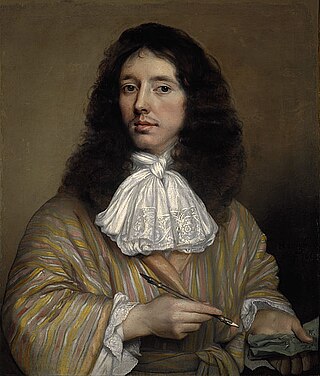
Baron Berners is a barony created by writ in the Peerage of England.

Baron Farnham, of Farnham in the County of Cavan, is a title in the Peerage of Ireland. It was created in 1756 for John Maxwell, who had previously represented Cavan Borough in the Irish House of Commons. John Maxwell's son, the second Baron, was created Viscount Farnham in 1760 and Earl of Farnham in 1763. Both titles were in the Peerage of Ireland but became extinct when he died childless in 1779. His brother and successor, the third Baron, was again created Viscount Farnham in 1781 and Earl of Farnham in 1785. These titles were also in the Peerage of Ireland. His son, the second Earl, sat in the House of Lords as an Irish Representative Peer from 1816 to 1823. However, he had no children and on his death in 1823 the viscountcy and earldom became extinct.
There have been five Dunbar Baronetcies; the first four in the Baronetage of Nova Scotia, and the last in the Baronetage of the United Kingdom. There is also a Hope-Dunbar Baronetcy of Baldoon.
There have been 18 baronetcies created for persons with the surname Campbell, six in the Baronetage of Nova Scotia and twelve in the Baronetage of the United Kingdom.

There have been six baronetcies created for persons with the surname Smyth, two in the Baronetage of England, one in the Baronetage of Great Britain, one in the Baronetage of Ireland and two in the Baronetage of the United Kingdom. One creation is extant as of 2010.

The Barnewall Baronetcy, of Crickstown Castle in the County of Meath, is a title in the Baronetage of Ireland. It was created on 21 February 1623 for Sir Patrick Barnewall. He was the member of a family that had been settled in Ireland since 1172, when Sir Michael de Berneval landed on the coast of Cork. The second and third Baronets both represented County Meath in the Irish House of Commons. The fifth Baronet, a descendant of the second son the first Baronet, established his right to the title in 1744. However, his cousin Thomas Barnewall, de jure sixth Baronet, never assumed the title and it remained dormant from his death in 1790 until 1821, when it was successfully claimed by Robert Barnewall, the eighth Baronet.
There have been five baronetcies created for people with the surname Napier, three in the Baronetage of England, one in the Baronetage of Nova Scotia and one in the Baronetage of the United Kingdom. As of 2014 two of the creations are extant.

There have been twenty one baronetcies created for persons with the surname Williams, eight in the Baronetage of England, three in the Baronetage of Great Britain and ten in the Baronetage of the United Kingdom. Only six of the creations are extant as of 2017.
There have been several baronetcies created for persons with the surname Maxwell, all of them in the Baronetage of Nova Scotia.
There have been six baronetcies created for persons with the surname Thomas, three in the Baronetage of England, one in the Baronetage of Great Britain and two in the Baronetage of the United Kingdom. Two of the creations are extant as of 2016.
There have been two baronetcies created for persons with the surname Dunlop, with both in the Baronetage of the United Kingdom. One creation is extant as of 2007.
Three baronetcies were created for persons with the surname D'Oyly, two in the Baronetage of England and one in the Baronetage of the United Kingdom. One creation is extant as of 2008.

The Worsley family is an English family that is derived from Sir Elias de Workesley, a Norman knight who was a youth at the time of the Norman conquest. He later accompanied Duke Robert II of Normandy on the First Crusade and was buried at Rhodes.

There have been two baronetcies created for different branches of the Throckmorton family, 6th cousins, both descended from Sir John Throckmorton, Under-Treasurer of England temp. King Henry VI (1422–1461). Both titles, which were in the Baronetage of England, are now extinct. The Throckmortons, originally of Throckmorton near Pershore, Worcestershire, trace their history back to the 12th century. In 1409 Sir John de Throckmorton, Under-Treasurer of England, married Eleanor Spinney, daughter and heiress of Guy Spinney of Coughton, Warwickshire, where the senior branch of the family, which bore the junior baronetcy, became established. The Coughton estate included in 1968 a dower house named "Spiney House, Coughton", named after that family. The senior Throckmorton Baronetcy, of Tortworth in the County of Gloucester, was created in the Baronetage of England on 29 June 1611 for William Throckmorton, of Coss Court, Tortworth, Gloucestershire, sixth in descent from John Throckmorton, younger son of Sir John Throckmorton, Under-Treasurer of England. The third Baronet sat as Member of Parliament for Gloucestershire and Wotton Basset. The title became extinct on the death of the fourth Baronet in a duel in 1682.

The Carr Baronetcy, of Sleaford in the County of Lincolnshire, is a title in the Baronetage of England. It was created on 29 June 1611 for Edward Carr who was Sheriff of Lincolnshire in 1614. The 3rd Baronet was Member of Parliament for Lincolnshire in the House of Commons.
There have been three baronetcies created for people with the surname Riddell, one in the Baronetage of Nova Scotia, one in the Baronetage of Great Britain and one in the Baronetage of the United Kingdom. As of 2014 one creation is extant.

There have been four baronetcies created for persons with the surname Bruce, two in the Baronetage of Nova Scotia and two in the Baronetage of the United Kingdom. Two of the creations are extant as of 2010.
There have been three baronetcies created for persons with the surname Clayton, two in the Baronetage of Great Britain and one in the Baronetage of the United Kingdom. One creation is extant as of 2021.
There have been four baronetcies created for people with the surname Innes, three in the Baronetage of Nova Scotia and one in the Baronetage of the United Kingdom. Three of the creations are extant as of 2010.
There have been four baronetcies created for persons with the surname Hay, all in the Baronetage of Nova Scotia. Two creations are extinct, one dormant and one extant. A fifth baronetcy in the Jacobite Peerage, although theoretically extant, is not recognised by the Lyon Office.









